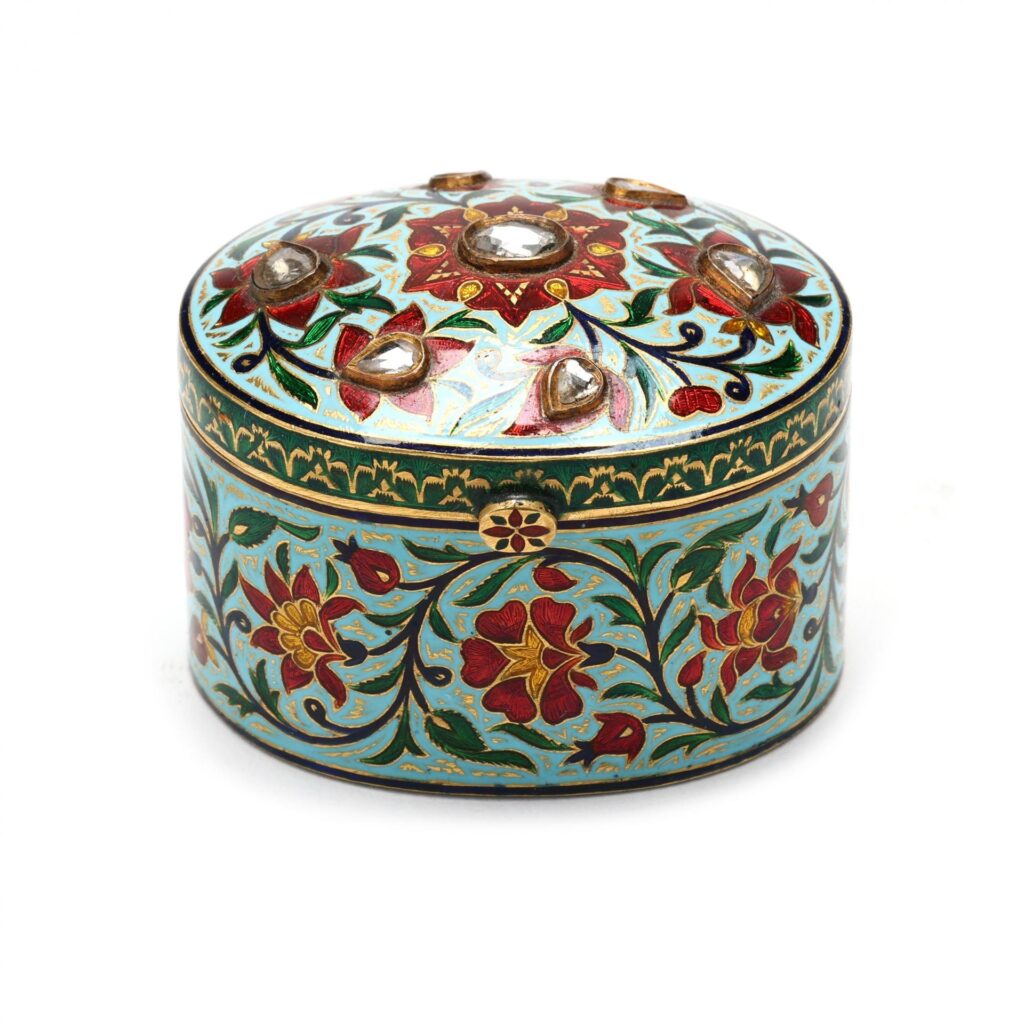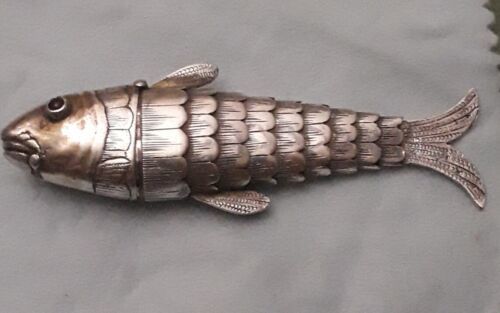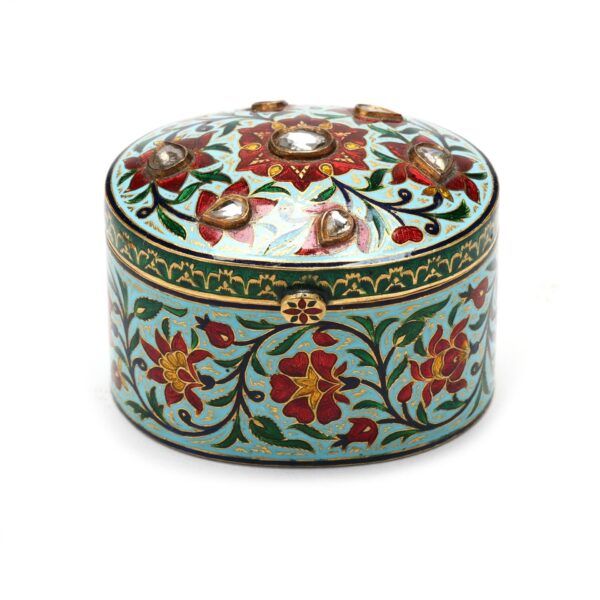#Antique #Pill #Boxes #Medicine #WorthPoint

One of my biggest fascinations with Victorians was how they believed that beauty and utility should be inseparable and turned everyday objects into objets d’art, whether it was to serve pickles, pour tea, or hold pills.
Though their purpose was to carry medications and not to serve as typical decorative objects, Victorians did pill boxes up big. Often made of luxurious materials like gold, ivory, and silver, they were elaborately embellished with gems, pearls, enamels, hand paintings, and other fancy decorations; many jewelry artisans, including Tiffany, also designed their own line.
With all the beautiful little pill boxes popping up everywhere, it didn’t take long for them to become a fashionable accessory. Collectors today avidly seek them out for their combined functionality and splendid artistry.
THINKING INSIDE THE BOX
Medications in tablet form and containers to store them in have been around since ancient times, and pill boxes have been made in different shapes and styles over the centuries, evolving with available materials and trends.
Early pill boxes were crafted from bone and wood, metals including copper and tin, and precious materials like gold, ivory, jade, porcelain, and silver. Many featured intricate designs and personal engravings. Ornately decorated pill boxes became highly prized starting in the 18th century and then more so during the Victorian Era when pills began to be mass-produced.
Originally made to be placed on a dressing-room vanity or nightstand, pill boxes eventually became much smaller so Victorian ladies could conveniently carry them in their purses. Because they were marketed to and used mainly by women, examples for men are harder to find.
Pill boxes are similar to snuff boxes, which were in vogue and carried everywhere in the 18th century when sniffing ground tobacco for a quick hit of nicotine was fashionable for both men and women. Antique snuff boxes tend to be a bit bigger and are more expensive. When offering these pieces, many sellers label them as “snuff/pill” boxes.
Pill boxes are also similar to patch boxes, which date to the early 18th century and were small containers made to hold the black beauty marks women wore.
Pill boxes quickly became a must-have ornamental accessory for Victorian women. Some also thought of them as miniature jewelry boxes for holding rings and other small trinkets. Some boxes were hooked to another Victorian “it” accessory—chatelaines—for a double dose of trendiness; others were made as pendants.
Many renowned jewelers designed lavish pill boxes for their wealthy clients during the Victorian era and beyond, including Bulgari, Cartier, and Fabergé. They were crafted out of precious metals and adorned with diamonds and other gemstones, semi-precious stones, pearls, artistic enameling work, and sometimes a mix of two or more of these embellishments.
However, most people couldn’t afford such luxury items, and American-made, mass-produced pill boxes became more affordable and in demand by the early 20th century. Boxes covered with cameos and rhinestones were popular, as were pieces with art deco designs. Some American ceramic companies also produced pill boxes, including Holt-Howard, which made this rare and adorable mermaid box that sold in March for $3,900.
Interest in elaborate pill boxes dwindled by the 1960s, and they were replaced with plastic boxes, including the day-by-day schedulers that emerged after the pill dispenser was invented in 1964. However, during the 1980s and 1990s, some companies produced vintage-looking pieces.

With its whimsical aesthetic, an articulated fish pill box combines two things Victorians loved: silver objects and novelty pieces.
COLLECTING PILL BOXES
With today’s technology offering a digital app for every human activity possible, there is something quaint about owning an antique pill box, which can help make it more agreeable to take medications. Some are simple, while others are true works of art.
Pill boxes may not be absolutely necessary, but they are a nice personal accessory for collectors and much more attractive than modern plastic boxes. They don’t even have to be used for medication, either. They can be repurposed as boxes for holding small trinkets or even skincare treatments in capsule form.
Pretty much any antique pill box is collectible and can be found in different materials, shapes, and sizes; many cost between $10 and $50, while others are worth thousands.
Some common antique pill boxes collectors can find are made out of enamel, porcelain, and silver. Enamel examples are known for their durable and colorful designs, which often feature detailed patterns or scenes. Many pill boxes made of fine porcelain have hand-painted designs. Silver boxes, popular with Victorians, often have engraved initials or patterns.
They were also made in various figural shapes, including animals, doctor’s bags, and fruit.

MOST VALUABLE PILL BOXES
The most pricey and prized pill boxes coveted by collectors are the high-end pieces made by skilled designers and jewelers like Cartier, Faberge, Tiffany, Van Cleef & Arpels. Unless you’re super lucky, it’s not likely that you’ll find a box by one of these luxury brands while thrifting. These examples are generally offered at auction and can sell for thousands of dollars.
Pill boxes that include enameling, mosaics, and the metalworking technique of repoussé bring higher prices on the secondary market as well. Antique Chinese and Italian pill boxes are also valuable and sought after, as are pieces made by modern designers like Jay Strongwater.
No matter how simple or elaborate their exteriors are, collectors are drawn to pill boxes as artifacts from a time when utilitarian objects were as much an art form as they were a functional need.
Adina K. Francis has been a writer and editor in the antiques and collectibles field for more than 20 years. She has a bit of an obsession with the Victorians and thinks that dogs are one of life’s greatest gifts.
WorthPoint—Discover. Value. Preserve.




